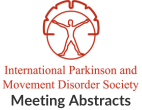Compound heterozygous mutation of the Beta galactosidase 1 gene presenting with familial dystonia and spondylo-epiphyseal dysplasia
Objective: To describe a family with dystonia and spondylo-epiphyseal dysplasia Background: Childhood onset Generalized dystonia is usually associated with genetic causes. Method: We present a…Increased Prevalence of Thyroid Disease in Cervical Dystonia
Objective: This study evaluated the hypothesis that autoimmune disorders may be more common in cervical dystonia (CD) than neurological controls. Background: Although there are many…Dystonic tremor: one symptom, different etiologies: About three cases
Objective: To recall some clinical situations and causes of dystonic tremor (DT). Background: DT is a tremor produced by dystonic muscle contraction. It is an…Lingual dystonia etiology spectrum in a tertiary center
Objective: To describe a group of patients with LP regarding clinical presentation, etiology, and treatment. Background: Lingual dystonia (LD) is a rare, disabling and difficult…Categorizing non-focal dystonia, an un-biased data-driven approach
Objective: To apply data-driven methods to characterize dystonic patterns across body regions in non-focal dystonia. Background: Current categorization of body distributions affected by dystonia lacks…Exploring the diversity of alleviating manoeuvres in Cervical Dystonia
Objective: We explored five different categories of alleviating manoeuvres (AMs) in patients with cervical dystonia (CD): pure sensory; sensorimotor manoeuvres in which sensory input is…Task Specific Oromandibular dystonia due to Shisha (Hookah) Smoking- “Shisha Dystonia”
Objective: To report an unusual case of oromandibular dystonia due to repeated task of smoking shisha/hookah. Background: Focal task-specific dystonia is common in men, aged…Cognitive dysfunction in cervical dystonia
Objective: To assess prevalence of anxiety and depression in patients with CD and investigate cognitive changes including social cognition and executive function. Background: Cervical dystonia,…“Happy fix” transiently improves cervical dystonia
Objective: To describe an emotional trick that has not been described in patient with cervical dystonia. Background: Geste antagoniste is a sensory trick that can…Pallidal beta activity correlates with stimulation-induced bradykinesia in dystonia patients
Objective: Identify a neurophysiological correlate of stimulation-induced bradykinesia in dystonia Background: Bradykinesia is a known side-effect of pallidal deep brain stimulation (DBS) in dystonia patients…
- « Previous Page
- 1
- …
- 15
- 16
- 17
- 18
- 19
- …
- 48
- Next Page »
